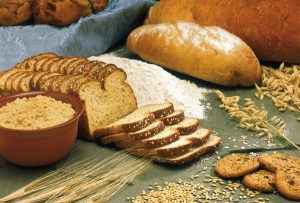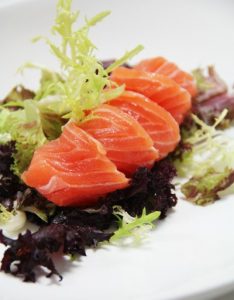HEALTH & FITNESS — At nearly all hours of the day, parents of infants have a lot to think about, including being conscious of what their little ones are eating. From birth and beyond, proper nutrition is fundamental for continued health.
 In fact, according to the World Health Organization, optimal feeding during the first three years of life is important for its role in reducing the risk of chronic disease and promoting regular mental and physical development.
In fact, according to the World Health Organization, optimal feeding during the first three years of life is important for its role in reducing the risk of chronic disease and promoting regular mental and physical development.
Orange Fruits and Vegetables
Offering a combination of mildly sweet and savory flavors, orange fruits and vegetables including butternut squash, pumpkin, carrot and sweet potato provide multiple important nutrients. They’re great sources of beta-carotene, which is a carotenoid that’s converted into vitamin A in the body. Vitamin A is essential for a robust immune system, healthy skin and optimal vision in dim light. Additionally, these fruits and veggies provide potassium that helps maintain the body’s fluid balance and in turn is important in controlling blood pressure.
Meat, Poultry, Eggs, Beans and Legumes
This group of foods provides savory flavors for baby to enjoy along with a multitude of important nutrients including:
- Choline: plays an important role in metabolism and early brain development.
- Protein: essential for growth and development as well as optimal functioning of the body.
- Iron: supports brain development, immune function and overall growth. By around 6 months of age, babies’ iron stores built up in utero are typically depleted, which is why they need to start consuming food sources of iron around that age. In fact, according to The Journal of Nutrition, 20% of babies between 6-12 months are at risk for iron deficiency.
- Zinc: supports immune function and overall growth. According to the Dietary Guidelines for Americans, approximately half (54%) of United States infants fed human milk have inadequate zinc intake.
Fish
Along with providing nutrients like protein and choline, fish (such as salmon, arctic char, steelhead trout and sardines) also offers interesting new flavors for babies. Plus, fish contains DHA, an essential fatty acid important for eye and brain development during infancy, as well as vitamin D, an essential nutrient that supports healthy bones and teeth.
Broccoli, Cauliflower and Spinach
Along with the introduction of slightly bitter flavors, veggies like these also provide vitamin C, an essential antioxidant that’s of particular importance during infancy because it helps the body better absorb non-heme iron from plant foods. When feeding your baby iron-rich foods like beans, whole grains, nuts or seeds in infant-safe forms, pair them with a fruit or vegetable high in vitamin C for optimal iron absorption.
Whole Grains
 Amaranth, barley, quinoa and iron-fortified cereals offer nutty, mildly sweet and savory flavors as well as dietary benefits including iron, zinc, protein and potassium, plus dietary fiber that helps support digestive health and healthy bowel function.
Amaranth, barley, quinoa and iron-fortified cereals offer nutty, mildly sweet and savory flavors as well as dietary benefits including iron, zinc, protein and potassium, plus dietary fiber that helps support digestive health and healthy bowel function.
Coconut Cream and Yogurt
Mild, slightly sweet flavors like coconut cream and full-fat Greek yogurt also provide fats essential for overall growth and neurological development. Plus, fat is an important source of energy for on-the-go infants.







